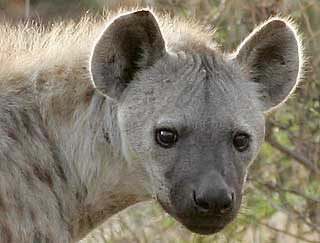Contact Details: Scotch Macaskill, Dirt Road Traders, Currys Post Road, Howick, KwaZulu-Natal, South Africa. Tel: +27 (0)82 578 2329. Privacy: Your privacy is guaranteed. See our Privacy Policy for more. This site accepts advertising and other forms of compensation - see Disclosure and Advertising for details. Site updated: 2022. Copyright © 2002 - 2022 Scotch Macaskill

| ||||||||||||||||||||||||||||||
| ||||||||||||||||||||||||||||||
| ALL GALLERIES: |
Hyena PicturesThis hyena gallery features images of the Spotted Hyena (Crocuta crocuta), the majority taken in South Africa's Kruger National Park. The more reclusive Brown Hyena (Hyaena brunnea) has a longer, shaggier coat and more pointed ears than its spotted relative and is much less frequently seen. The spotted hyenas in the Kruger National Park are accustomed to vehicles and certainly not reclusive. They often make their dens in culverts under the road, so it's not unusual to see a hyena family at close range when they emerge from the den to watch the tourists driving by.
Permitted Uses: See Terms of Use. | |||||||||||||||||||||||||||||
|
|
||||||||||||||||||||||||||||||




















Comments
Have your say or ask any questions in the comment box below.